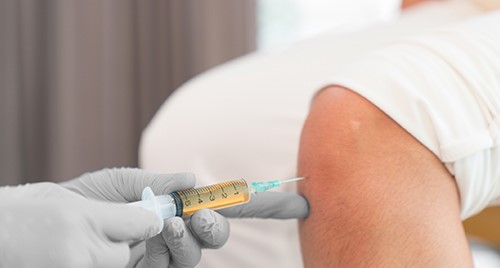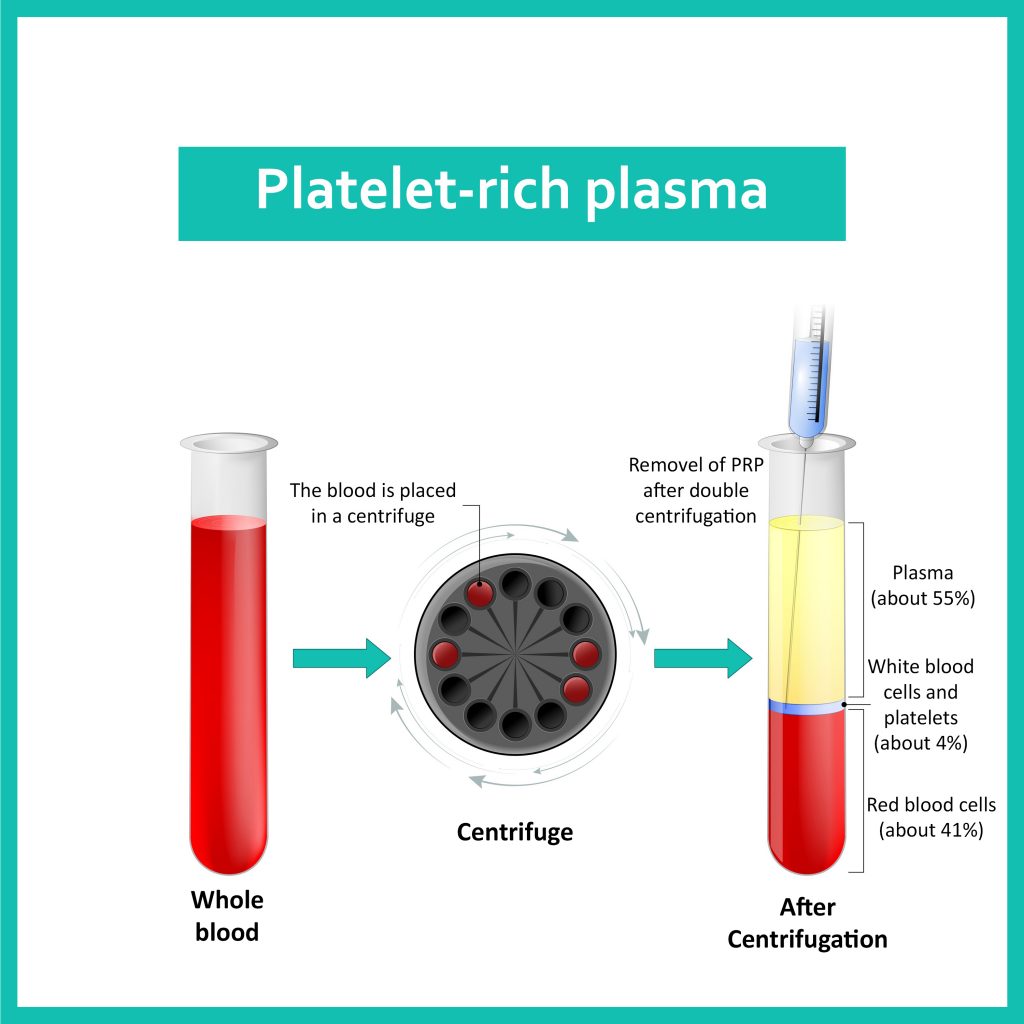Platelet-Rich-Plasma (PRP) Therapy for Joint Pain

Growing Pain In Children- Causes, Symptoms, And Treatments
September 25, 2020
Spastic Cerebral Palsy – How Botox Injections Can Help Your Child?
October 6, 2020
Platelet-rich plasma, or PRP, is a substance used to promote healing when injected. The platelets present in your blood contain unique characteristics that help your blood to clot. It also has proteins that encourage cell growth. Doctors produce PRP by separating platelets from the blood and concentrating it.
The aim is to inject PRP into your damaged tissues, which will stimulate your body to grow healthy and new cells. According to an orthopedist in Gurgaon, Dr. Ratnav Ratan, the body’s tissues may heal faster because the tissue growth factors are more concentrated in the PRP injections.
What exactly is a PRP therapy?
Our blood has several solid components, like red blood cells, white blood cells, and plasma. Platelets are rich in growth factors (proteins that promote cell growth) that play a crucial role in healing injuries, so platelets are famous for their blood clotted capabilities.
PRP therapy aims to create plasma with many platelets for you, much more than the quantity found in the blood, and then it effectively treats your injuries. When you have more platelets, the growth factor is high, and the healing time is less. The blood used for PRP therapy is 5-10 times richer in platelet concentration than the normal blood.
How is PRP therapy performed?
These are the steps involved in PRP therapy:
- Your doctor will extract your blood from a vein in your arm.
- After the extraction, plasma is separated from the blood cells using centrifugation. The process involves spinning the blood at high speed to separate all its components, giving us a high concentration of platelets.
- PRP injections are given immediately after centrifugation.
PRP is injected into the injury area directly or with an ultrasound machine for the precise location. The doctor will give direct injections into the joints in joint problems like cartilage injury or arthritis.
Platelet-rich plasma. Autologous conditioned plasma, is a concentrate of platelet-rich plasma derived from whole blood, centrifuged to remove red blood cells. blood test tube, centrifuge, syringe, and test tube with layers of blood components

How does PRP work?
PRP’s primary purpose is to boost your healing process in a safe environment with a non-intrusive method. Although it is not exactly clear how PRP works, studies have shown that the PRP’s increased concentration of growth factors can speed up your healing process.
PRP will stimulate your body to grow new, healthy cells and promote healing. The number of injections depends upon the kind of injury you have and the treatment you require. In many cases, only one injection is sufficient. However, in some cases, several injections are required over a long period.
PRP is mostly used to heal the following:
• Damaged cartilage
• Torn ligaments
• Pulled hamstring muscles
• Injuries in tendon
What problems can PRP solve for you?
• Osteoarthritis of the major joints (knee, shoulder, hip, and spine)
• Rotator cuff tendinopathy, strains, and tears
• Tendonitis (tennis elbow, epicondylitis)
• Heel Pain (chronic achilles tendonitis, plantar fascitis)
• Acute sports injuries— ligament and muscle injuries
• Knee injury (cartilage defect, ligament tear, meniscal tears)
• Runners/jumpers knee
• Fractures, nonunions – speed the healing of broken bones
• Frozen shoulder
• Surgical repair of tendons, cartilage, meniscus – to help issues heal
What are the rules to follow before your therapy?
Before getting a PRP therapy, there are some rules that you must adhere to for your safety.
- Talk to your doctor about all the medications you are undertaking and mention all the underlying health issues.
- Abstain from consuming any blood-thinning supplements like alcohol, herbs, and vitamins for at least 1 to 2 weeks prior.
- Start eating healthy and increase your water intake, especially a day before your treatment.
- Discontinue any steroids or steroids injections that you may be taking at least one month before your treatment.
What are the post-procedure rules you should follow?
Even though your doctor will discuss all the post-procedure rules with you in detail, some rules you should follow after a PRP therapy:
- Eat healthily and increase your water intake to improve the healing process.
- Do not take any pain-killers or other medicines unless recommended by your doctor.
- Take rest for 2-3 days with using the injected area only for slight movements.
- Avoid smoking.
How much time will it take to heal?
As mentioned earlier, healing time can depend on many factors like your health, the type of injury, and the area injected. However, in most cases, it takes about a week or two for things to get normal.
If your injury isn’t severe, you might even be allowed to resume your everyday work after a couple of days, provided that you will not put a strain on the injected area.
Are there any side-effects of PRP therapy?
PRP therapy is one of the safest ways to treat injuries as it is not a surgical procedure. There might be some minor side effects.
Swelling and extreme pain after injection is two of the most common problems noted by the patients. Even though both these problems are temporary and gradually go away with time, you need to contact your doctor if the pain is overbearing.



